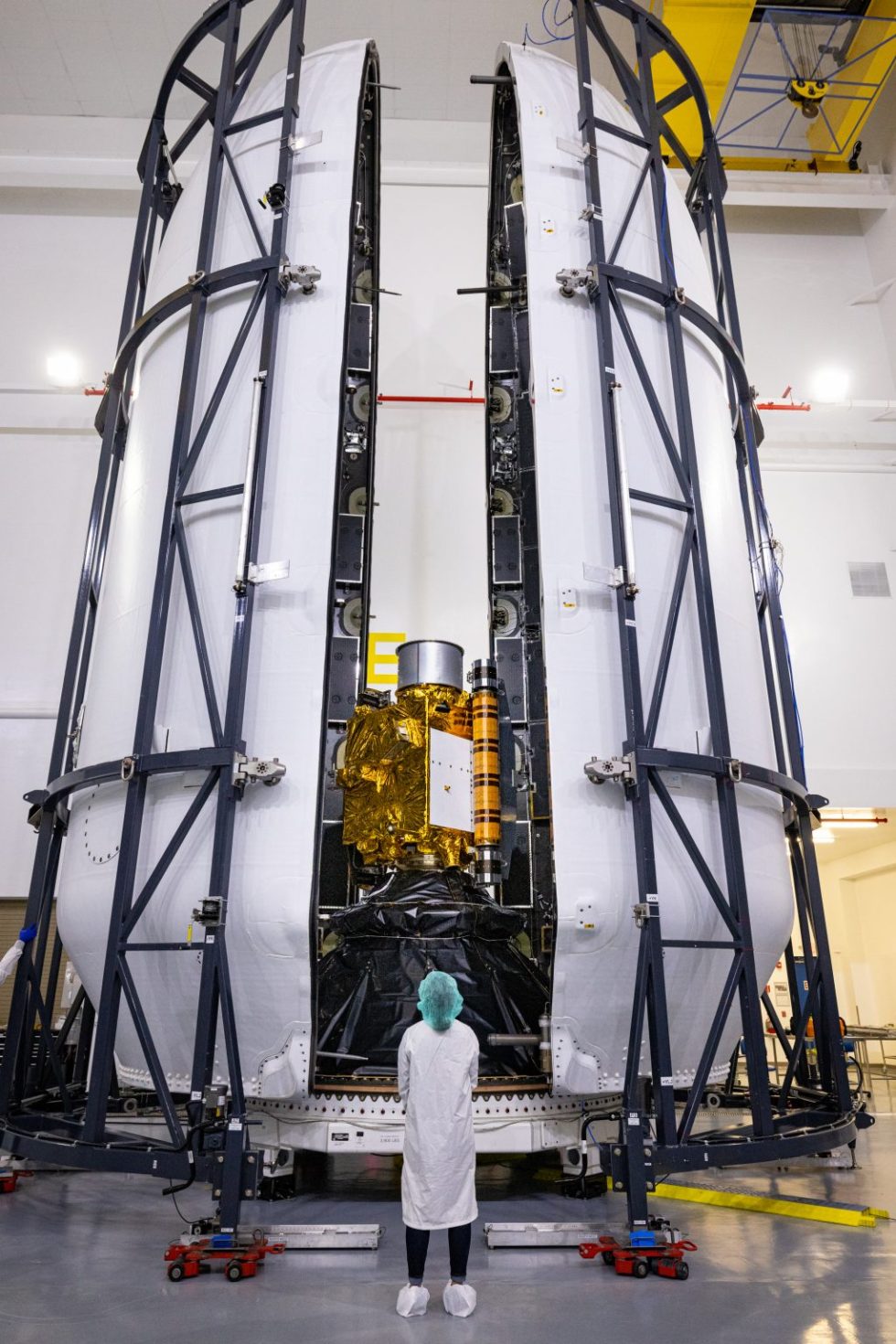
1:35 am ET Wednesday update: With near perfect weather at the launch site at Vandenberg Space Force Base, in Southern California, a Falcon 9 rocket streaked into the darkened sky right on schedule late Tuesday night. The rocket successfully boosted NASA's asteriod test mission into orbit. If all goes well, the DART spacecraft will collide with a small asteroid next October.
Shortly after launch, the rocket's first stage made a successful landing on the Of Course I Still Love You drone ship. Including Falcon Heavy boosters, this was SpaceX's 95th successful first stage landing, and its 72nd at sea.
Original post: Weather permitting, a Falcon 9 rocket will launch a key asteroid-deflection mission for NASA on Tuesday night from California. The Double Asteroid Redirection Test, or DART mission, will seek to demonstrate the capability to change an asteroid's orbit next year.
Powered by ion thrusters, the 700-kg spacecraft aims to rendezvous with a double asteroid next October. Once there, the spacecraft will attempt to collide with Dimorphos, a small "moonlet" of a larger asteroid named Didymos. DART will strike Dimorphos at a rate a little greater than 6.6 km/s, aiming to slightly alter the trajectory of the asteroid, which measures approximately 170 meters across.
If NASA successfully completes this test, it will have demonstrated the capability to, one day, deflect an incoming asteroid on a collision course with Earth. "We're trying to show that we can mitigate a threat like this," said Thomas Zurbuchen, NASA's chief of science, in an interview with Ars.
Planetary defense
Planetary defense is the tracking and potential deflection of hazardous asteroids, comets, and other large bodies that might strike Earth. In public surveys, planetary defense always ranks highly among choices of what NASA should focus on, and the US Congress has asked the space agency to identify all asteroids with a diameter of 140 meters or greater. That is an object large enough to destroy a city on Earth.
However, until about five years ago, NASA had made limited progress toward these goals. There were always bigger priorities for the space agency. And truth be told, the odds were in NASA's favor. There are no known asteroids that threaten to strike Earth during the next century. And while rogue asteroids are possible, humanity can more than likely afford to wait centuries to fully address the issue. In all of recorded history, in fact, there has yet to be a human death credibly attributed to an asteroid strike.
Major asteroid impacts are the classic very low-probability, very high-consequence event. And yet doing nothing seems foolish, particularly because NASA could do something with a relatively small investment. So after he became NASA's Associate Administrator for the Science Mission Directorate in 2016, Zurbuchen tripled funding for planetary defense from $50 million to $150 million. This allowed NASA to fund not just research, but actual projects. Work soon began on the DART mission, which is now ready to fly.
The next step, Zurbuchen said, is to fully fund the construction and assembly of the Near-Earth Object Surveyor mission, or NEO-Surveyor. This space-based observatory is designed to detect 65 percent of the undiscovered asteroids 140 meters or larger near Earth within five years and 90 percent of them within a decade.
This mission could launch as soon as 2025, but it is subject to funding from Congress. The White House has sought funding to begin building NEO Surveyor in the fiscal year 2022 budget.
Still more to do
"I believe we have a planetary defense program that is worth talking about now," Zurbuchen said. "I'm really proud of what we have been able to do. But I still believe we can do better."
If DART is a success, Zurbuchen said, one possible next step is to develop a fully fueled kinetic impactor that could be prepositioned in Earth orbit. Such a capability, he said, would be ready to go should an asteroid be found on an intercept course with Earth. The farther out that an asteroid can be deflected, the more meaningful the deflection would be.
The Falcon 9 first stage launching the DART mission has flown two previous missions: the Sentinel-6 mission for NASA in November 2020, and a SpaceX Starlink mission in May 2021. Liftoff is set for 10:20 pm local time from Vandenberg Space Force Base in California (1:20 am EST Wednesday, 06:20 UTC Wednesday).
Weather appears favorable for a launch, with a 90 percent chance of "go" conditions. SpaceX has already conducted a static fire test of the rocket and has reported no issues that would preclude an on-time launch.
reader comments
356